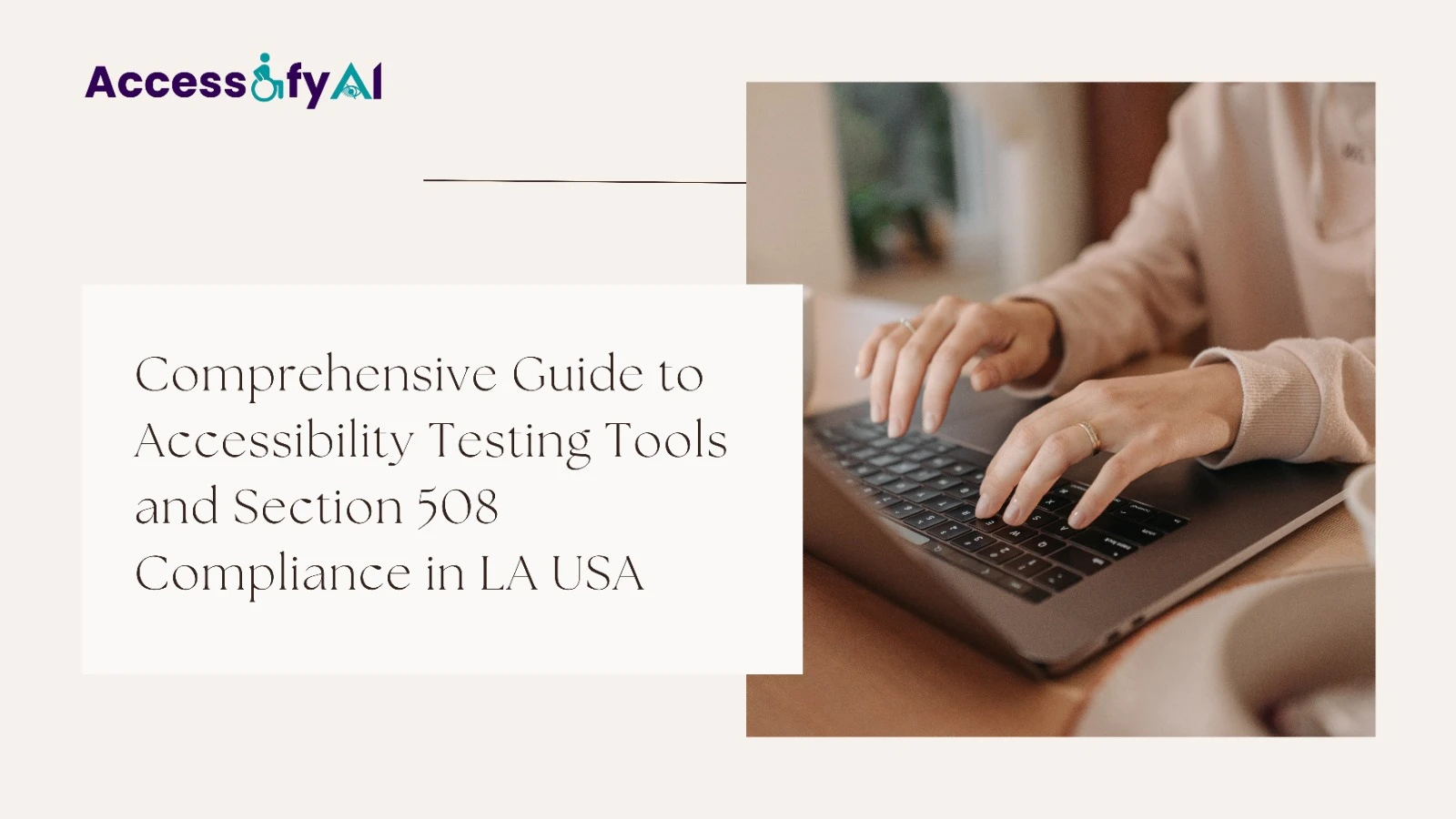Digital accessibility has become a cornerstone of modern web development, ensuring that websites and applications are usable by everyone, including people with disabilities. In LA USA, businesses are increasingly recognizing the importance of implementing robust accessibility testing frameworks and maintaining Section 508 compliance to create inclusive digital experiences.
Understanding the Foundation of Digital Accessibility
Digital accessibility compliance requires a systematic approach that combines automated testing, manual evaluation, and ongoing monitoring. The Web Content Accessibility Guidelines (WCAG) 2.1 and 2.2 provide the international standard for web accessibility, offering detailed success criteria across four fundamental principles: perceivable, operable, understandable, and robust content.
The Evolution of WCAG Standards
WCAG 2.1 introduced nine new success criteria specifically addressing mobile accessibility, cognitive and learning disabilities, and low vision requirements. Building upon this foundation, WCAG 2.2 added additional criteria focusing on mobile interaction, authentication processes, and visual presentation improvements. These updates reflect the evolving digital landscape and the diverse needs of users with disabilities.
Key Components of Effective Accessibility Testing
Effective accessibility testing requires a multi-layered approach that encompasses both automated and manual testing methodologies. Automated tools can quickly identify technical violations such as missing alternative text, insufficient color contrast, or improper heading structure. However, manual testing remains essential for evaluating user experience aspects like logical reading order, meaningful link text, and keyboard navigation flow.
Essential Accessibility Testing Tools for Modern Web Development
The landscape of accessibility testing tools in LA USA has expanded significantly, offering developers and organizations various options to evaluate and improve their digital accessibility compliance. These tools range from browser extensions to comprehensive enterprise-level platforms.
Browser-Based Testing Extensions
Popular browser extensions like axe DevTools, WAVE, and Lighthouse provide immediate feedback during the development process. These tools integrate directly into the developer workflow, highlighting accessibility issues in real-time and offering specific remediation guidance. They excel at identifying color contrast violations, missing ARIA labels, and structural markup problems.
Automated Scanning Platforms
Enterprise-level automated scanning platforms offer comprehensive site-wide analysis capabilities. These tools can crawl entire websites, generating detailed reports that prioritize issues by severity and WCAG conformance level. They provide valuable insights into accessibility trends across large digital properties and help organizations track improvement over time.
Manual Testing Methodologies
While automated tools are invaluable, manual testing remains crucial for comprehensive accessibility evaluation. This includes keyboard-only navigation testing, screen reader compatibility assessment, and cognitive load evaluation. Manual testing helps identify contextual issues that automated tools cannot detect, such as confusing navigation patterns or overly complex user interfaces.
Mobile Accessibility Testing
With mobile traffic comprising the majority of web usage, mobile accessibility testing has become essential. Specialized tools evaluate touch target sizes, gesture-based interactions, and responsive design accessibility. These tools ensure that mobile experiences comply with WCAG 2.2 requirements for target size, dragging movements, and focus appearance.
Navigating Section 508 Compliance Requirements
Section 508 compliance in LA USA represents a critical regulatory framework that organizations must understand and implement effectively. Section 508 of the Rehabilitation Act requires federal agencies and their contractors to make electronic and information technology accessible to people with disabilities.
Section 508 Standards and WCAG Alignment
The current Section 508 standards, updated in 2018, incorporate WCAG 2.0 Level A and AA success criteria. This alignment creates consistency between federal accessibility requirements and international standards, simplifying compliance efforts for organizations serving both government and private sector clients.
Procurement and Contracting Implications
Section 508 compliance extends beyond website accessibility to encompass all information and communication technology procurement. Organizations must evaluate the accessibility of software applications, electronic documents, multimedia content, and hardware devices. This comprehensive approach ensures that accessibility considerations are integrated throughout the technology lifecycle.
Documentation and Reporting Requirements
Section 508 compliance requires detailed documentation of accessibility features and limitations. Voluntary Product Accessibility Templates (VPATs) serve as standardized reporting mechanisms that communicate how products conform to accessibility standards. These documents are essential for procurement decisions and ongoing compliance monitoring.
AccessifyAI's Comprehensive Approach to Accessibility Solutions
At AccessifyAI, we understand that achieving and maintaining digital accessibility requires expertise, appropriate tools, and ongoing commitment. Our approach combines cutting-edge automated testing capabilities with expert manual evaluation to provide comprehensive accessibility solutions for organizations throughout LA and beyond.
Customized Testing Strategies
We develop customized testing strategies that align with each organization's specific technology stack, user base, and compliance requirements. Our methodology encompasses WCAG 2.1 and 2.2 guidelines while addressing sector-specific accessibility considerations such as healthcare privacy requirements or educational content standards.
Ongoing Monitoring and Support
Digital accessibility is not a one-time achievement but an ongoing commitment that requires continuous monitoring and improvement. We provide ongoing support services that include regular accessibility audits, staff training programs, and technical guidance for maintaining compliance as digital properties evolve.
Integration with Development Workflows
Our accessibility testing solutions integrate seamlessly with existing development workflows, providing developers with real-time feedback and remediation guidance. This approach prevents accessibility issues from reaching production while building accessibility expertise within development teams.
Building Sustainable Accessibility Programs
Creating truly accessible digital experiences requires more than implementing testing tools and achieving compliance checkmarks. Organizations must develop sustainable accessibility programs that embed inclusive design principles throughout their digital strategy.
Successful accessibility programs combine technical expertise with user-centered design approaches, ensuring that accessibility improvements enhance the overall user experience rather than merely meeting regulatory requirements. This holistic approach creates digital environments that truly serve all users while positioning organizations as leaders in inclusive design.
The investment in comprehensive accessibility testing and Section 508 compliance yields significant returns through expanded market reach, improved user satisfaction, reduced legal risk, and enhanced brand reputation. As digital accessibility continues to evolve, organizations that proactively embrace these principles will be better positioned to serve diverse user communities and thrive in an increasingly inclusive digital landscape.
